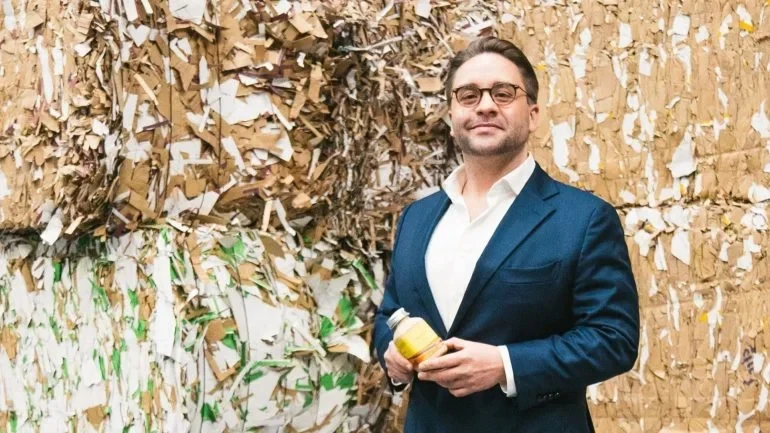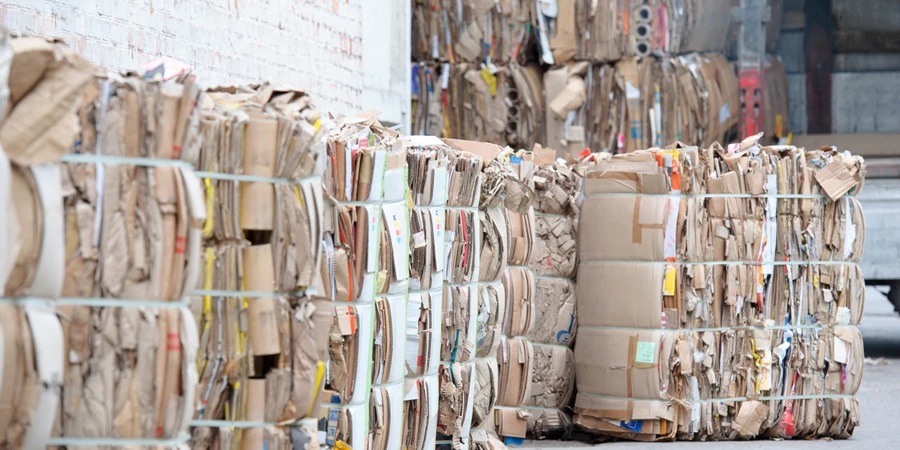Sustainable packaging is a potent tool, showcasing a brand’s environmental dedication while shaping consumer perceptions and purchases.

Sustainability is key for businesses, and according to the World Economic Forum, 90% of executives agree. Whether this is being driven by investor demand, banks monitoring ESG credentials or a genuine passion for the long-term future of our planet is perhaps by the by. What matters is that sustainability is quickly becoming a key consideration for all businesses.
It’s not just a must-have for banks or the board either, but a key consideration for consumers too. According to Deloitte’s 2023 ‘The Sustainable Consumer’ report, consumers embraced more sustainable habits last year, than in the previous one. In terms of actions taken, 75% have recycled or composted household waste, 68% have reduced their food waste and 64% have limited their use of single use packaging.
One in three consumers have also stopped purchasing certain brands and products because of ethical or sustainability-related concerns. While there’s no doubt the majority of brands are putting in the work when it comes to sustainable practices, they also need to think about how they can signpost this easily for consumers.
Thinking about FMCG brands specifically, while they no doubt have their sustainability commitments and actions outlined on their websites, or in reports, how can they easily signpost their sustainability commitments to consumers doing their weekly shop?
This is where packaging can make a real difference. Not only is packaging an essential part of a company’s identity and branding, but used properly it can also be a strong indicator of a brand’s values and sustainability commitments. Often packaging is the first experience consumers have with a product, therefore it is a key opportunity to showcase its sustainability credentials quickly and effectively.
What sustainable packaging says to consumers
Research by Boston Consulting Group shows that more than two out of three consumers have declared that environmentally friendly, recyclable packaging is important to them. Deloitte’s research reflects similar sentiments, with more than half of those surveyed saying they consider a product which uses recyclable, compostable or biodegradable packaging to be more sustainable.
According to research, the average Brit spends 37 minutes in the supermarket per visit. With such little time to make a purchasing decision, packaging plays a crucial role in driving consumer decisions, so FMCG brands looking to demonstrate their sustainability credentials need to make it as easy as possible.
Research from Pro Carton, the European Association of Carton and Cartonboard manufacturers, shows that more than 80% of Brits are most confident about the recyclability of paper and corrugated cardboard. Therefore, brands that choose these materials are easily signposting the recyclability of their products.
While it may sound straightforward, packaging that looks a bit “rustic” and is easily identifiable as being made of paper materials, versus those replicating a plastic look or other plant-based solutions, works best to showcase the brand’s relationship with sustainability. Therefore, materials such as corrugate and moulded fibre mean consumers can easily identify the material and know that it’s recyclable, versus having to research a new sustainable material that they haven’t come across before.
There’s a wealth of examples of businesses taking this approach in recent years. In January Pringles changed its classic tube packaging for easier recycling for consumers. The metal at the bottom of the tube has also been replaced with recycled paper, and the plastic cap is also recyclable. According to the brand, the changed packaging will still keep the crisps fresh for 15 months.
For food products especially, ditching plastic and adopting paper or moulded fibre packaging is extremely beneficial beyond brand positioning. Unlike plastic, moulded fibre or paper can absorb moisture, and keep food fresh for longer, whilst being completely recyclable and biodegradable – an extra win not only for consumers, but also stockists needing to consider the impact of sustainability on their supply chain.
Benefits of sustainable packaging beyond consumer perception
Although changing packaging can seem like a big commitment, the impact it can have on a business should not be understated. Not only could it attract new consumers who are looking for brands committed to sustainability, it can also go a long way to meeting various sustainability commitments and can become an integral element of a business’ long-term sustainability strategy. For example, businesses can include this in creating and meeting their SBTi (science-based targets), and also declare this sustainable shift in their wider CSRD (Corporate Sustainability Reporting Directive) reporting.
Once brands have committed to sustainable packaging, they can take this a step further by using that packaging to further educate consumers about recycling correctly, by printing clear instructions on how their packaging should be recycled. This reduces consumers’ individual environmental impact, and in turn the business’ Scope 3 impact, i.e. impact created beyond the business’ internal supply chain – further supporting the business’ efforts towards the Extended Producer Responsibility (EPR).
Sustainable packaging doesn’t just help attract new customers, it also allows FMCG brands to reap various financial benefits in the long run. Sustainable packaging can have a positive impact on transport and inventory costs, increased customer loyalty, removes the Plastic Packaging Tax, and can help businesses gain support from the Government in the form of subsidies/tax credits.
How can businesses get there?
While changing packaging can seem daunting, the pros far outweigh the cons, and with the right partner the changeover process does not need to be lengthy or complicated. Cullen are Europe’s only combined manufacturer of moulded fibre and corrugated packaging and as a leader in sustainable packaging, we support businesses of all sizes, across just about every sector in converting their current packaging into a more sustainable paper based alternative in just six weeks.
In the last two years we have produced over 1 billion units of plastic free packaging for customers in 35 countries, whilst simultaneously educating businesses such as supermarkets and major retailers on how simple replacing single-use plastic with moulded fibre can be and the scale of the opportunity to adopt recyclable, compostable and biodegradable alternatives to plastic for a more sustainable future.
The complete adoption of sustainable packaging is never going to happen overnight. But with the right partner and continuous education on the alternative packaging available, brands can make sure they have the tools and knowledge they need to make better and more informed choices.
Final thoughts
With packaging such an integral part of a brand’s identity it should not be overlooked when considering your sustainability strategy. If you’re embedding sustainable practices across your business, but your packaging doesn’t reflect that it’s letting you down.
As plastic waste remains a major environmental challenge, and one of the things most consumers are committed to eradicating in order to reduce their environmental impact, using sustainable packaging is not only a strong step towards a greener future, but also to a whole new pool of consumers who are looking for sustainability-minded brands.
About the author: David MacDonald is the CEO and owner of Cullen, a provider of sustainable packaging solutions.
Source from Packaging Gateway
Disclaimer: The information set forth above is provided by packaging-gateway.com independently of Alibaba.com. Alibaba.com makes no representation and warranties as to the quality and reliability of the seller and products.




